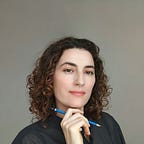Usability Evaluation and Site Redesign
Ironhack prework: Challenge 3
For this challenge, I’m going to jump into the shoes of a world traveler.
User type
Worldtrotter, Backpacker — 18–38 y/o.
So, the user decided to go visit one of the world wonders — Petra, Jordan (from the list of the seven wonders of the new millennium) that has been sitting in his/her dreams for a long time now. Doesn’t have a long time to plan but also doesn’t need it. Will be traveling in 6 months and open to almost any possibility but have a budget constraint. Price-cautious and prefer experiences where he/her has a chance to meet people and make acquaintances to enjoy the wonder together. Not picky and can accommodate the most affordable, adventurous, genuine experience.
Research
- Nearest airport / most convenient airport to destination: Aqaba / Amman.
- Currency: 1 JOD is 1.20 EUR.
- Visa can be obtained upon arrival. The CDC and WHO recommend the following vaccinations for Jordan: hepatitis A, hepatitis B, typhoid, yellow fever, rabies, anthrax, meningitis, polio, measles, mumps and rubella (MMR), Tdap (tetanus, diphtheria and pertussis), chickenpox, shingles, pneumonia and influenza. Shot lasts 2 years.
- The Most recommended time to visit is spring or autumn when the temperature is about 18–25. Good walking shoes are a must, comfortable clothes and a light rain coat.
- Days needed to visit attraction: 1–3 just to visit Petra out of one week for the whole trip with accommodation at Wadi Musa.
Benchmarking
After usability heuristics evaluation of Kayak, Skyscanner, TripAdvisor apps I decided that Skyscanner is more suitable for my user type to accomplish flight and accommodation booking.
- It informs user about what is gong on through appropriate feedback within reasonable time
- Speaks user’s language, making information appear in a natural and logical order with clear marks for leaving the unwanted state without having to go through an extended dialogue
- It is consistent in situations and actions, doesn’t contain information which is irrelevant or rarely needed
- The system can cater to both inexperienced and experienced users
- Minimize the user’s memory load by making objects, actions and options visible
TripAdvisor is overwhelmed with information and Kayak has some information which for this specific user type is not so valuable.
Testing
5 seconds test
All 3 users gave identically answers:
- What did you see? — App for booking
- What can this tool do for you? — Book a flight ticket, hotel
- Where would you search for a flight? — At the beginning on the top
20 min test and interview
The budget for this trip is defined by all users under 500€. Traveling time 1 week. All 3 persons were asked to look for flight costs from Berlin to Amman on a different time period within 6 months and accommodation near the historical place of Petra. Since their budget is limited they prefer to travel by public bus from Amman airport to Wadi Musa.
In order to keep track of the clicks my users needed to obtain this information I decided to recorder the whole process.
Insights and redesigning wireframes
On the flight ticket search I found few points where some changes in usability could be done.
- Paint point 1: by choosing flight dates there is a “direct only” on/off toggle that confused users. They remember that at one point have used it and couldn’t recall where. Solution: to add it to the search screen too.
- Paint point 2: poor information hierarchy between “share” button and “sort and filter”. Solution: to move the “share” button up so that it is not blocking down part of the screen and make it less strong (as it is used at hotel booking screen), “sort and filter” with proper icon moves to the left corner.
- Paint point 3: in search results the same information appears many times and brings inflexibility of combination as well as frustration of finding the best solution by checking a long list. Solution: separate flights search result by “to go” section and “return” as it is would be done in one way by clicking on each day separately.
By finding accommodation on the same dates all participants found it super easy. The only thing they couldn’t spot at the beginning was the “sort and filter” button. By scrolling through the hotel’s variety with so many colorful pictures they didn’t realize that it is at the down part of the screen. Solution: it was moved up by following the same design that is applied at the flight booking screen.
My findings
Not an easy task I would say, cause we are talking about quite big brands with probably a big team working for a long time on design and usability.
What was really helpful in the whole process of Usability Evaluation and Site Redesign those user interviews. After several times going through them I realized that actually there is still room for some changes which might bring better experiences to users. The only thing I need to do is to listen to them.
And yes, the mantra “I’m not the user of the product I’m creating and evaluating” is very useful!
